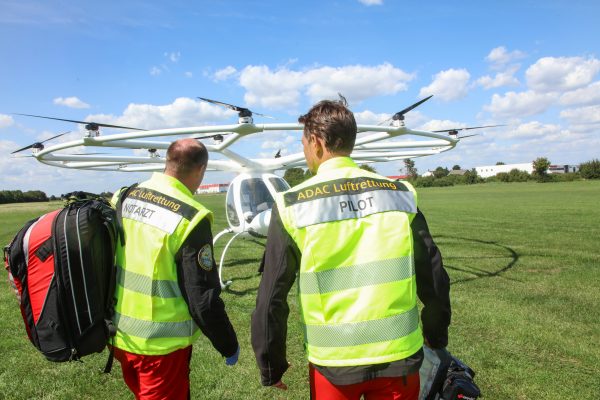Just science fiction, or soon a reality in rescuing human lives? In a feasibility study launched by ADAC Luftrettung (air rescue) at the end of 2018 and supported by the charitable ADAC foundation, a multicopter was used for the first time in a staged rescue operation. Covering everything from the alert at the ADAC Luftrettung HEMS base to the emergency treatment of the patient on the scene, a real-life operation was staged. Publication of the findings of the research project is scheduled for next year. From then on, the theoretical and practical experiences gained could be applied in a real-life pilot project. The researchers are using a Volocopter from the company of the same name based in Bruchsal/Germany for the study.
This makes the charitable ADAC Luftrettung the first air rescue organisation in the world to test a manned multicopter in aeromedical missions. Multicopters are novel vertical take-off aircraft propelled by several electrically powered rotors. The study focuses on the question whether this type of aircraft provides a tactical advantage in emergency rescue missions.
For the purpose of this feasibility study, model regions were selected in two German states: the emergency service area of Ansbach with the Dinkelsbühl HEMS base in Bavaria, as well as Mainz-Rheinhessen and Bad Kreuznach in Rhineland Palatinate.
Aeromedical missions using Volocopters are currently being computer-simulated for both regions by the Institut für Notfallmedizin und Medizinmanagement (INM, Institute for Emergency Medicine and Medical Management) at Ludwig Maximilian University in Munich. The research project in cooperation with Volocopter aims at getting physicians to patients faster than by ground ambulance so as to further improve medical care and save lives.
Scientific support for the project comes from the German Aerospace Center (DLR) with whom ADAC air rescue has already cooperated in research and development.



















